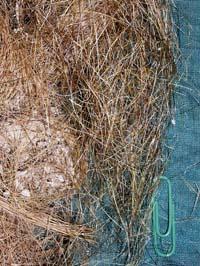DNA intracavilar mammoth within reach

The part of the hair outside the skin is not the best place for the extraction of the DNA molecule, due to the scarcity of genetic material inside. However, on many occasions, among the remains of old living beings are hairs, there is no alternative to DNA extraction. Therefore, a group of biochemists from Copenhagen has fine-tuned a method of DNA extraction obtaining good results from mammoth hairs.
According to biochemists, the outer part of the hair has a great advantage: it has keratin. Keratin surrounds and protects DNA, so in hair cells the genetic material degrades more slowly than in many other cells. This advantage does not solve the original problem, the amount of DNA extracted is very small. Therefore, biochemists have made a special effort to get as much information as possible to this small amount.
The results have been good, have analyzed the mitochondrial DNA of the hairy Siberian mammoth Mammuthus primigenius and have obtained more information than in any other analysis using the new method. Among other things, they have analyzed the mammoth Adams, a specimen discovered in 1799 that has been preserved without freezing. For biochemists, the technique now used with mammoth footprints can be used in the future with remains of many other living beings, such as humans.





